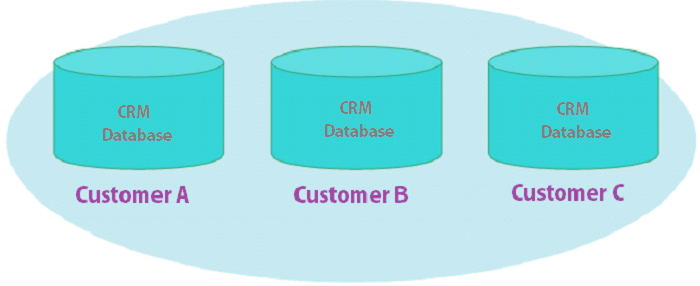
You might be wondering what this is all about. Multi-Tenant and Single-Tenant Database is nothing but the data architecture that your SaaS CRM vendor follows for storing your crm data. Let’s get into more detail.
If your SaaS CRM vendor follows the Multi-Tenant Database architecture, then
- Your business crm data coexist with other business crm data, as it is multi-tenanted.
- As all the customers (including you) of your crm vendor share the same database, everyone is forced to follow the same data structure which limits the customization capabilities.
- Even though your CRM vendor can claim a strongly secured design in place to safeguard your data, there might be little risk involved with maintaining the secrecy of your data.
Whereas if your SaaS CRM vendor follows the Single-Tenant Database architecture, then
- Every customer (including you) of your CRM vendor will have their own dedicated database, as it is single tenanted.
- High degree of customization capabilities, as you can expand or upgrade your data schema as your business needs.
- You could enjoy the complete privacy on data handling.
- No security risks as your data is completely segregated from others.
Even though most of the CRM vendors available in the market follows the multi-tenant data architecture, sensing the customer’s preference and the security, they are moving towards the single-tenant database model or have started providing their customers with the single-tenant variant.
